LA SEYNE SUR MER |
La Seyne is a French city located along the Mediterranean Sea in Var. "Seynois" is the name of its inhabitants.
There are 58,252 inhabitants. It is a family seaside resort as well as a harbour. |
|
In the past there was a very big and famous shipyard called C.N.I.M. (Constructions Navales et Industrielles de la Méditerranée) where civil and military boats were built, giving work to more than 3.000 workers. The first boat was built in 1711, the last one in 1989.
In 1989 this shipyard was definitely closed.
|
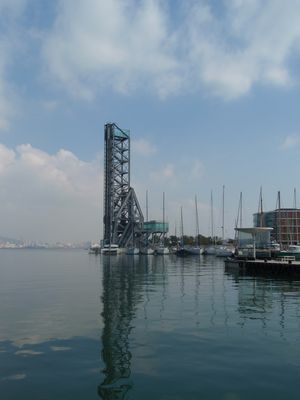 |
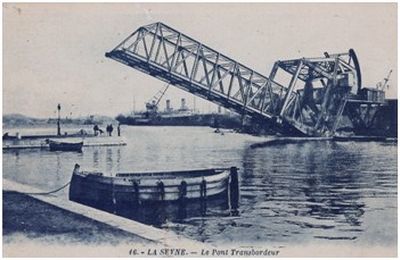
La Seyne's Transporter Bridge |
The school of the French Partners is in La Seyne. On Friday, we took the bus to the harbour of La Seyne.
Then, we took a boat, just across the street from the City Hall to go to Toulon.
|
|
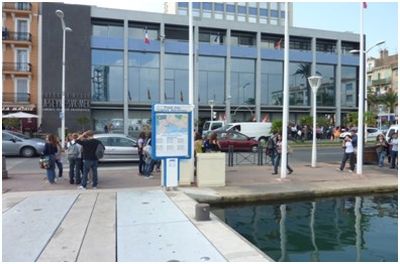 |
|
Toulon is the main administrative city of Var. There are 160,000 inhabitants. It's also the economic capital of Var. |
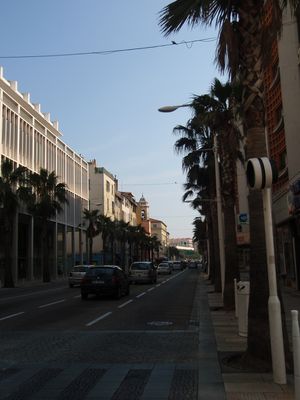 |
 |
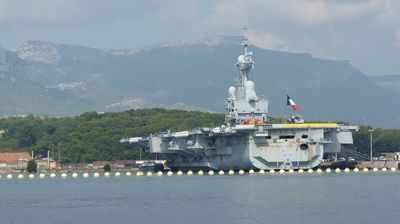 The French aircraft carrier "Charles De Gaulle" is based in Toulon.
The French aircraft carrier "Charles De Gaulle" is based in Toulon. |
It is divided into three parts: the military port, the Civil Port and the business port. This harbour has been used since antiquity. It's one of the most beautiful harbours in Europe.
|
The place was first selected for its position that enables one to keep watch all over the harbour. Indeed, it's closed by two peninsulas: Giens peninsula... |
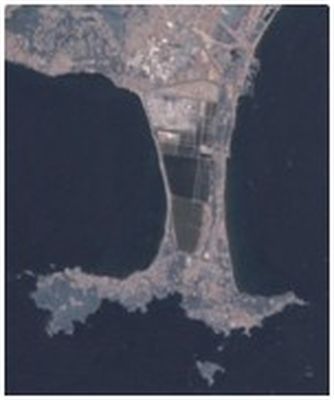 |
 |
... and St-Mandrier peninsula which separate the harbour from the sea.
Three castles were built to protect the port: The Royal Tower, Balaguier fort and Eguillette fort. |
Toulon is quite famous for what happened in 1942: The French army scuttled its own fleet to avoid giving it up to the Germans.
|
 |
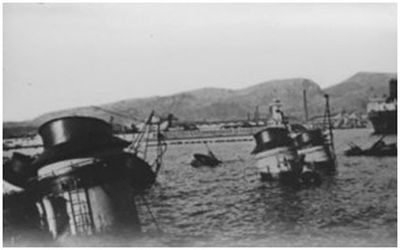 |
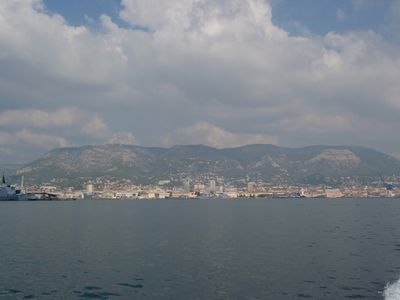
|
The Mount dominating Toulon is called Mount Faron.
Here is a legend associated to this place:
|
THE LEGEND OF THE GIANT HARE OF MOUNT FARON
|
Once upon a time, on the bushy and fragrant slopes of Mount Faron, there lived a giant hare.
The animal was famous throughout the region for her size. In all the surrounding villages, she was the first topic of conversation amongst villagers who all dreamt of seeing her at least once in their lives.
One day, a young hunter from a neighbouring village who occasionally indulged in poaching in the winter, imagined the huge rodent complementing his daily soup. So he headed towards the hills, trying to find the beast. He hid behind a rock and waited. At nightfall, the young man heard a strange but very distinct noise. It sounded like someone limping! By the light of the moon, he distinguished the gigantic quadruped. And what a surprise! The hare was crippled! Her left legs were shorter than her right ones!
"How can I possibly catch her?" the boy wondered. He then had quite an original idea: he went to the harbour right away and borrowed a net from a fisherman. The latter asked the hunter what he intended to do with a fishing net, and was particularly surprised and amused by the answer! So were all the old villagers who had gathered around them!
But the young man didn't pay much attention to them... He was sure he had found THE way of capturing the beast. So he merrily climbed back the slopes of Mount Faron to find the creature... He returned empty-ended!
Some say he nearly captured the beast, but that he tripped because of the net and nearly broke his neck. The hare had apparently lost balance because of her legs and fallen down a cliff thus managing to escape. What's for sure is that the unlucky hunter lost face on that particular day!
After him, other hunters and fishermen tried to catch the giant hare... In vain! They didn't even manage to spot her! But some say that a weird breath can sometimes be perceived, waving a bunch of thyme or rosemary.
Still today, when speaking about someone believing in something unlikely or trying to reach an utopia, the locals say "He's trying to catch the hare of Mount Faron!"
|
The "Toulonais" are the people who live in Toulon. They are very proud of their rugby team the RCT (Rugby Club Toulonais). |
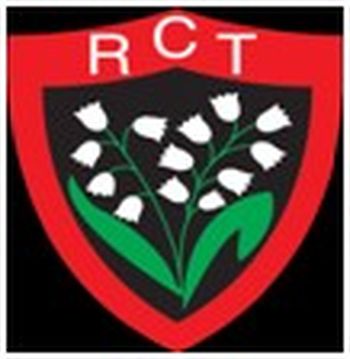 |
PORT D'ALON |
|
Our region is particularly popular for its coastline, of which Port d'Allon is a good example.
It is located between Sanary and Saint-Cyr-Sur-Mer. There is a coastal path where we walked on a very windy Wednesday.
It's a small valley with a lot of pines. This harbour is the property of the "conservatoire du littoral". This access is protected from May 1st to September 30th. |
We can only walk on the coastal path because the forest is private property.
On this photo, on the sea, we can see a big rock that looks like a submarine, hence its name: the submarine. |
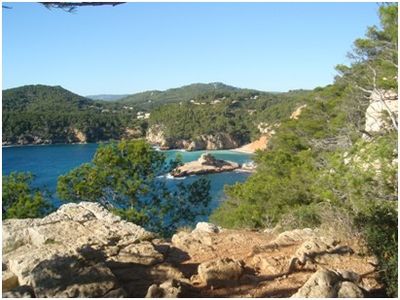 |
SANARY SUR MER
Sanary sur mer is a French seaside resort in Var. It's a Provencal town with a fishing harbour, and a fantastic market place every day, but particularly on Wednesdays. It's a nice place to visit, tourists love it.
|
 |
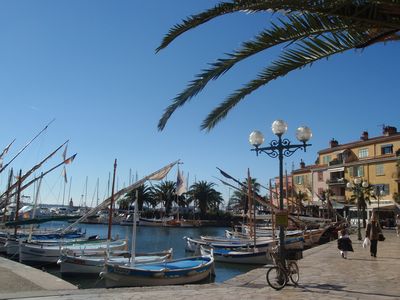
|
On Wednesday we went to the Provencal market of Sanary. We discovered amongst other things typically Provencal products such as... |
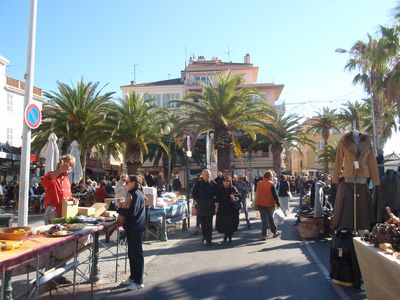 |
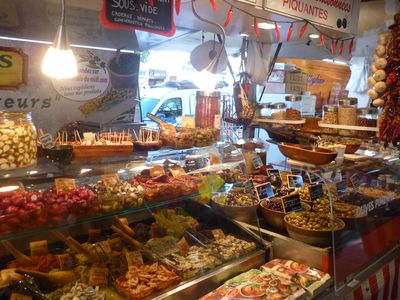
olives... |
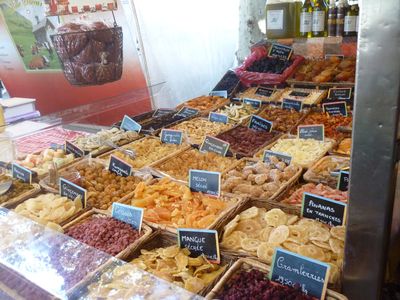
dry fruit... |

spices and... |
SANTONS
"Santons" are small hand-painted, terracotta nativity scene figurines (the child Jesus, the Virgin Mary and Saint Joseph, with the donkey and the ox...) produced in the region of Provence, in the southeast of France. So to learn more about these very specific Provencal figurines, we stopped in Aix-en-Provence on Tuesday and visited a shop where santons are manufactured and sold: "Les Santons Fouque", a renowned brand of "santons".
The word "santons" comes from the Provencal word "santouns" which means "little saints". Santons are statuettes used for the making of the Christmas crib, as the history of santons is closely linked to that of the Nativity.
The word "crib" comes from the Celtic word "krippe" which means "manger". According to the Gospels, the Infant Jesus, at his birth was put in a crib in a stable in Bethlehem, where the shepherds, then the Magi came to worship and adore him.
|
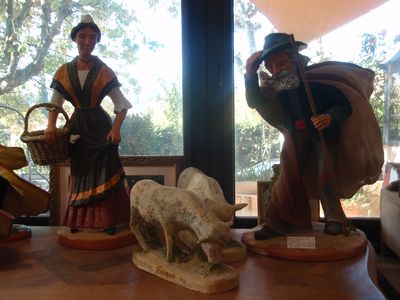 |
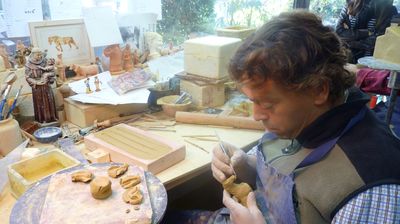
Mr Fouque, the owner of the place carving a clay santon |
A little history
The first cribs, with independent gilt wooden statues, appeared in the 13th century in Rome churches. They grew in number at the end of the 16th century after the Council of Trent officially decided to encourage popular piety and the veneration of images.
It is at that time that the first dressed santons appeared: their heads, hands and feet were carved and attached to a wooden or a metal frame.
This art spread in Naples in the 18th century as well as in Provence churches. |
When the French Revolution and the Terror period banned all religious symbols in public places, the cribs in the churches were destroyed and the Provencal families tried to express their devotion more discretely in their houses.
Then, a statue-maker called Jean-Louis Lagnel (1764-1822) created the first santons of Marseille. He had the idea of making small figures modelled in the clay of nearby Aubagne.
Then the santons were fired and painted. They were produced in large quantities and were inexpensive. This invention actually originated the Provence santons which were immediately successful. The first santon fair took place in 1803 in Marseille.
Since that period the number of workshops and santon makers has increased; they constantly create new models. |
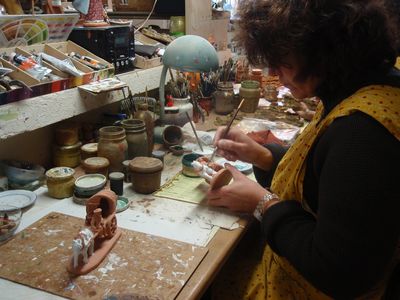
A lady painting a santon in Les Santons Fouque's workshop |
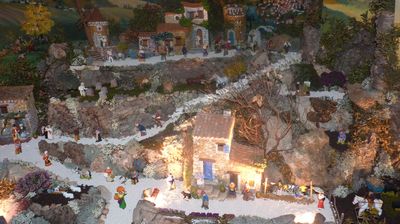
|
In a traditional Provencal Christmas crib, there are 55 individual figures representing various characters from Provencal villages and their traditional jobs.
This entire small world lives in a traditional landscape containing a river with a bridge, a hill and olive trees.
In Provence, making a crib is a real institution. The young and the less young are involved, combining imagination, fantasy and tradition.
|